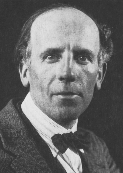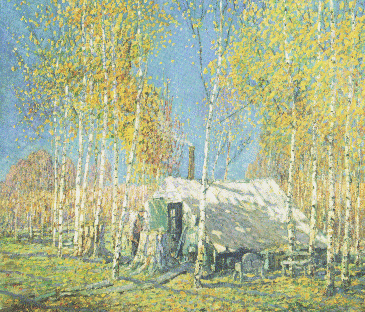
Arthur Lismer (1885-1969)
- painter and teacher, one of the Group of Seven
- born and raised in Sheffield, England, a smoky industrial city at the time
- at age 13 he won a scholarship to the Sheffield School of Art
- went to Antwerp, Belgium, to study at the Academie Royale des Beaux-Arts
- immigrated to Toronto in 1911 to find work as a commercial artist
- got a job at the design firm Grip Limited, where he met J.E.H. McDonald, Tom Thomson, and Frank Johnston, with whom he joined the Arts and Letters Club
- after meeting Lawren Harris, he began to associate with the artists in the Studio Building, and joined in on their trips to the northern Ontario bush
- he described a three week trip with Thomson in 1914:
The first night spent in the North and the thrilling days after were turning points in my life ... the bush, the trails, lakes, waterfalls ... moving camp from one wonderful lake to another---portage and tent pitching, fishing and sketching---and above all, the companionship of a great individual, a wonder with canoe, axe and fish line.
- in the 1920s, he painted landscapes of the Canadian wilderness using brilliant impressionist color and stylized compositions
- best known for his views of tall spruce and tamarack reduced to simplified conical forms, surrounded by low-lying lakes
- The Guides Home, Algonquin (1914, National Gallery, Ottawa) was an experiment in impressionism:

 back to the Well Known Canadians Page
back to the Well Known Canadians Page



 back to the Well Known Canadians Page
back to the Well Known Canadians Page